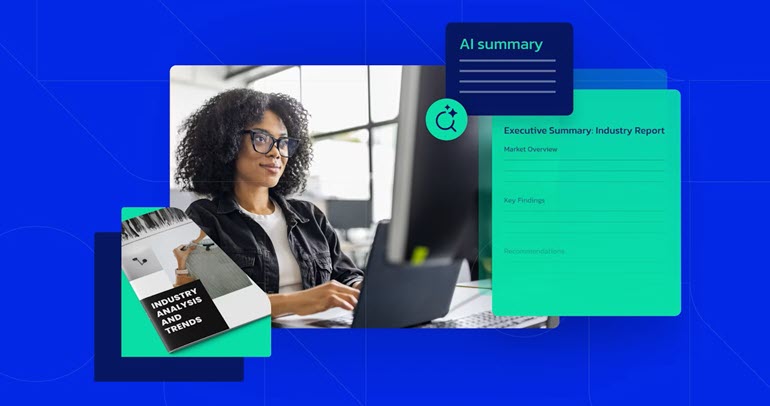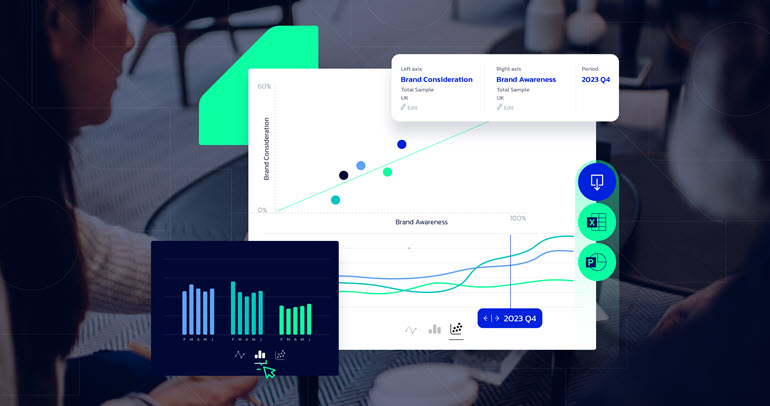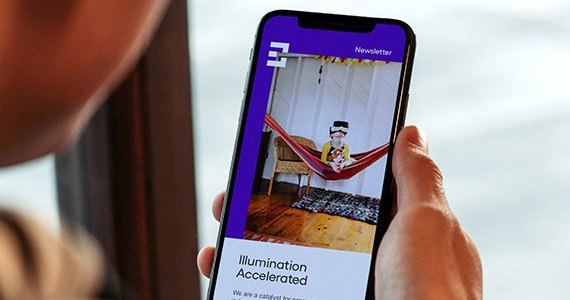
Energy rates in the United States continue to climb. According to the US Energy Information Administration, in 2022, state utility regulators approved $4.4 billion in net rate increases; this number rose to $9.7 billion in 2023 and is projected to reach $8.9 billion in 2024. Additionally, scientific analysis from the National Oceanic and Atmospheric Administration found that 2023 was the warmest year recorded globally and 2024 saw the fourth-hottest recorded summer in the US.
Although utilities have no say over extreme weather, its impacts on customers and the grid, or rising costs affecting their customers, the crucial investments utilities make to enhance and repair grid infrastructure can often lead to higher rates for their customers. Combining this with other challenges facing the energy industry today, it’s no surprise that Brand Trust scores for utilities have historically been low.
However, there are signs of a recovery on the horizon, according to our Cogent Syndicated Utility Trusted Brand & Customer Engagement™ (UTBCE): Residential study, which indicates that utilities that focus their brand activity efforts on what they can control and impact have the opportunity to build greater brand trust and strengthen positive perceptions among their customers and community.
The Ways Utilities’ Brand Activities Impact Customers’ Brand Trust
No matter the utility size, service type or regulatory nature, all utilities impact their community and environment in some way. From developing renewable energy generation resources to improving grid resilience and promoting new energy-efficiency programs, these brand activities impact how customers view utilities: 89% of customers recall at least some brand-related activity by their utility, according to our Cogent study findings. Furthermore, we found that any customer awareness of brand activities improves Brand Trust scores.
However, not all brand activities are equal—their influence on your customers and the greater community varies. One way to examine the relationship between brand activities and Brand Trust is to measure the lift those activities offer; that is to say, how much Brand Trust scores vary between customers who are aware of a utility-related brand activity and all customers.
For example, we found that customer awareness of the utility’s use of local call centers provides a moderate lift to Brand Trust (+59 points) whereas awareness of the utility organizing community gatherings to obtain customer feedback provides a larger lift to Brand Trust (+105 points). This indicates that it would be more effective for your utility to promote to your customers the community events you organize because it conveys a clear message—you care about the needs of your customers and want their feedback—and provides nearly twice the lift to Brand Trust. In showing you’re accessible, empathetic and committed to improving the customer experience, you can develop customer relationships that ensure trust in challenging times.
Additionally, we have encountered in our work a general assumption that Brand Trust should improve when a utility’s brand activities align with customers’ most important corporate social responsibility (CSR) causes. However, in our study, we have continually found that is not always the case.
For example, 34% of customers nationally identify supporting low-income families as the most important CSR cause for utilities to support. Customers who indicate this is among the most important causes and are aware of their utility’s low-income programs provide nearly identical Brand Trust scores to all customers who are aware of those programs. If promoting brand activities based on what is most important to customers leads to higher Brand Trust scores, then we’d have seen a much higher lift to Brand Trust than we do among customers who are aware of those brand activities and also feel they are the most important for their utility to support. Although supporting low-income families deserves high prioritization, these findings suggest that customers might consider the cause table stakes, rather than a differentiator, for a utility to support.
The takeaway is that utilities must strike a delicate balance between communicating about what matters most to their customers, the causes their customers expect their utility to address and the brand activities their customers identify as having the most potential to lift Brand Trust.
The Disconnect Between Brand Activities With the Highest Customer Awareness and Those That Lift Brand Trust the Most
Curiously, our study also reveals that the brand activities with the highest customer awareness—low-income programs, ability to keep personal information safe, and efforts to safeguard infrastructure, all of which are tied at 33% awareness—tend to provide only a moderate lift to Brand Trust (+44 to +67 points).
On the other hand, three brand activities stand out for having some of the lowest levels of customer awareness but providing some of the highest lifts to Brand Trust scores.
Three Utility Brand Activities That Lift Brand Trust the Most
1. Linking Rate Increases to Better Utility Service
Across the country, from customers to utility executives, rates are top of mind. Our data show that customers who are aware of how rate increases help to better serve them provide the greatest lift to Brand Trust, greater than the lift customers who are aware of any other brand activity provide.
This presents an opportunity for your utility to look for ways to educate and promote how your rates are being used to effectively help provide better service to customers. For example, many rate increases are due to needed investment in hardening infrastructure and creating resilient distribution systems. In our most recent findings, 33% of electric-only customers reported experiencing an outage, which is tied with the highest number of outages customers have reported since Q3 of 2015. Simultaneously, awareness of how rate increases help serve customers better is among the lowest of all brand activities, at 8%.
This indicates that nearly all utilities have significant headroom to link rate increases to the investments they’re making behind the scenes to strengthen the grid and support customers. Guiding your customers to make a connection with how their dollars are being used for their benefit can improve customer perceptions and lessen the negative customer reaction to increased rates.
2. Being a Leader on Renewable Energy Innovation
It’s difficult for customers to recognize how their utility is improving over time. Historically, developments within the natural gas and electric industry have moved at a snail’s pace. However, nearly all utilities are actively innovating, often right under their customers’ noses.
As local legislation pushes more utilities to target a larger proportion of renewable energy generation, look at what your utility is doing to meet those goals. While only 18% of utility customers nationwide are aware of how their utility is an industry leader on innovation, those who are aware of the innovative work their utility is doing provide a lift of +114 points to Brand Trust.
How is your utility working in innovative ways to achieve its renewable energy goals today?
From solar generation with battery storage to renewable natural gas from biomass, finding effective ways to publicize what your utility is already doing to lead renewable energy innovation presents a cost-effective opportunity to further build Brand Trust with your customers.
3. Acting as a Trusted Energy Advisor to Your Customers
Most utility customers cannot choose their utility; however, providing opportunities for customers to make energy service choices that are relevant to them provides a pathway to improving Brand Trust. All customers want to save money while some may also want to lessen their environmental impact; your utility can act as a trusted energy advisor by providing your customers offerings and advice from which they can choose how to reduce their energy use and, thus, costs in a way that works for them. Nationally, utility customers who are aware of brand activities that position their utility as a trusted energy advisor show a 111-point lift in Brand Trust scoring. Furthermore, this helps elevate the utility-customer relationship to feel more personal instead of purely transactional, which also improves customer perceptions.
It’s no coincidence that Salt River Project (SRP), the utility with the third highest Brand Trust score nationally, has the highest customer awareness of brand activities that position it as a trusted energy advisor and ranks among the top 25% of utilities across consumption management programs, enhanced billing options, enhanced payment options, alternative power/fuel options, and rate options. Moreover, SRP ranks fifth out of 142 utilities for providing valuable programs, tools and services to customers and ranks thirteenth for the total number of offerings used by customers. It’s easy to see why. With a quick look at SRP’s website, customers can quickly find information on savings and rebates. While easily accessing this information is important, what makes SRP stand out further are the dozens of savings and rebates options it provides.
Ensuring that customers can quickly and easily access information about offerings and options available to help manage their energy use is paramount for a utility to establish itself as a trusted energy advisor. Looking to develop new programs and offerings that could help virtually all customers lower or better manage their energy consumption will not only reinforce how your utility is a trusted energy advisor but also lead to decreased demand on the grid as customer participation increases. It’s a win-win for all involved!
Creating Lasting Utility Brand Trust With Your Customers
Utility brands across the US are facing the same headwinds regarding economic challenges, climate extremes and how both impact their customers. When it comes to things like these that are out of a utility’s control, sometimes working with—rather than against—the flow of change can reduce effort and increase impact. While these three brand activities stand out nationally for their strong potential to lift utility Brand Trust, your utility may differ. Our research and energy industry expertise can help you identify the brand activities that best resonate with your customers to improve Brand Trust in a meaningful, cost-effective way.
Brand Trust is one of the key metrics we monitor in our Cogent Syndicated UTBCE: Residential study, which tracks the performance of 142 gas, electric and combination utilities to identify brand and customer experience opportunities and trends in the industry. By leveraging these insights to help identify, develop and promote the most effective brand activities to your customers, your utility can significantly impact Brand Trust and engagement with your customers as you navigate challenges within the energy industry.
To learn more about our UTBCE: Residential study and how our energy industry experts can help you with your brand strategy, contact us by filling out the form below.
Want to learn more? Let’s connect.
About the Cogent Syndicated Utility Trusted Brand & Customer Engagement™: Residential study
Escalent conducted surveys among 61,432 residential electric, natural gas and combination utility customers of the 142 largest US utility companies (based on residential customer counts). The sample design uses a combination of quotas and weighting based on US census data to ensure a demographically balanced sample of each evaluated utility’s customers based on age, gender, income, race and ethnicity. Utilities within the same region and of the same type (e.g., electric-only providers) are given equal weight to balance the influence of each utility’s customers on survey results. The Brand Trust index score is a composite based upon consumer ratings across six factors. Escalent will supply the exact wording of any survey question upon request.








